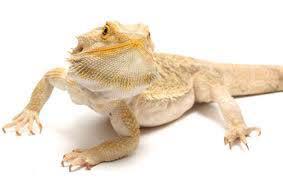Broody Beardies Egg-citing Story

(Please note this article contains scenes of surgery)
History: Izzy is a Bearded dragon who loves her food!. When her appetite suddenly reduced, her owners became very worried. They brought Izzy to see her Vet Sophie. They explained that Izzy used to eat 34 to 40 crickets per day but was now barely eating 2 to 3.
Clinical Examination:
Sophie examined her and could feel multiple small rounded objects in her coelomic cavity (belly). They felt like follicles.
Bearded Dragons lay eggs and the stage before the formation of a shelled egg is called a follicle. Sometimes, female reptiles can produce lots of follicles but, for various reasons, those follicles become stuck in their development. This is called follicular stasis. This can make female reptiles very ill.
Diagnostic Tests:
X-rays were taken which confirmed excellent bone structure and no evidence of major disease or abnormalities. However, numerous follicles were seen.
An ultrasound scan confirmed that there were many large follicles on each ovary. Each measured about 1cm in diameter which is larger than any normally developing follicle.


Follicles can be seen as the black circles on the ultrasound scan photo.
Izzy was discharged with instructions to feed critical care (a supportive liquid feed) and daily bathing to keep her hydrated. She was given a liquid calcium supplement to help aid her need for calcium for the egg shells. A laying area was provided in case the follicles developed into shelled eggs which could then be laid.
Three weeks later, Izzy was rechecked. She was still eating small numbers of crickets most days and taking her liquid feed well, but she was not her normal self. A repeated x-ray and scan found the follicles had not changed in size or shaped and confirmed that Izzy was suffering from follicular stasis.
Surgery:
Izzy was given pain killers and placed under general anaesthetic. Reptiles often hold their breath under anaesthetic, so Izzy was placed on a ventilator which would breathe for her. A heat lamp was used to keep her warm and her temperature was continuously monitored.

An internal thermometer probe was placed to measure her temperature during the surgery and a doppler probe was used to measure her heart rate.
Sophie made a small incision through the midline of Izzy's belly and could see the yellow follicles straight away.

Sophie used sterile cotton buds to safely and gently pull the follicles out. If the follicles break the yolk inside would cause a nasty infection in Izzy's body!

Sophie then had to keep a very steady hand to place metal staples to carefully remove the follicles and ovaries from the blood supply.
Look how close the big blood vessel is!

Like Cats and Dogs, Bearded Dragons have two ovaries so the same procedure was undertaken to remove the remaining ovary and its follicles.
The muscle and skin were closed with small sutures. Fluids were given to help her recover quickly. You can see how much space the follicles would have taken up inside her belly. No wonder she couldn't eat much-there was very little room left for food!

Recovery:
Izzy made a full recovery and two months later now, she is eating really well though her diet has been altered to improve the amount of vegetable matter she takes in.
Excessive feeding ca cause reproductive problems. Izzy likely produced too many follicles than her body could cope with because she was eating far too many crickets.
Adult Bearded Dragons should mainly be fed crunchy leafy greens, weeds and other vegetables, with live food such as crickets, hoppers and cockroaches only being fed three to four times a week.
If you have a reptile and would like a review of diet and husbandry, don't delay, book in with one of our nurses in our Cardiff Hospital today!
We wish to thank Izzy and her owners for sharing her story.





